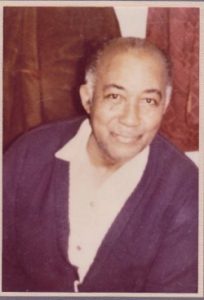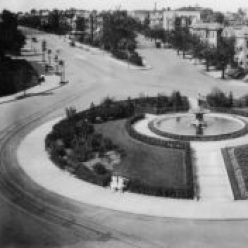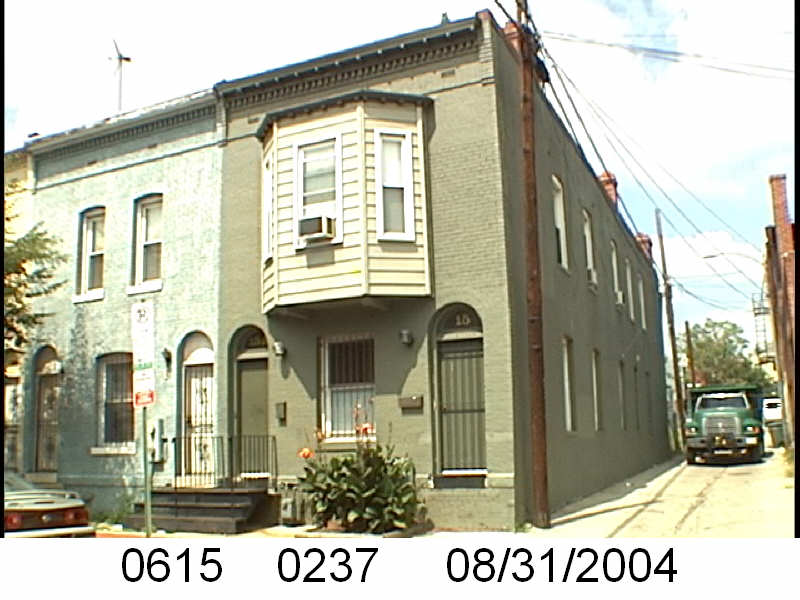I briefly mentioned Ida Dorsey Scott when reviewing 1717 New Jersey Ave NW when it changed from having White residents to Black residents. She owned the house from 1924 to 1951.
The house was foreclosed January 1924 from Mayo and Sarah Scott. Because the first mention of the Scotts is a foreclosure, it does not state the relationship between Mayo and Sarah.
Looking up Mayo J. Scott, because his name is so unusual, I found there were two Mayo Scotts, Sr. and Jr. Neither of them married to a Sarah.
A Mayo Scott appears in the DC Recorder of Deeds for a lease from July 1923 for 1707 New Jersey Avenue. It was between just Mayo J. Scott and William Taylor. There was no William Taylor listed as an owner for that block. The closest I can find was a Grace Taylor who was on the deed with Amelia Green at 1703 New Jersey Avenue.
Looking at the City Directory, I found the link between Mayo and Ida Dorsey Scott. They were apparently married. Ida was married to a man named Arthur C. Dorsey. Arthur died in 1936 and the Rev. Ida Dorsey Scott is mentioned as his divorced survivor.
Going back to Mayo J. Scott, I will assume the elder. He was previously married to Annaca Alberta Jackson, but divorced her in 1923 citing ‘desertion’. They were married in 1901 and had three children, one I will guess was Mayo James Scott Jr, who sometimes switched it up to James M. Scott. I gather he didn’t want to be a sandwich condiment.

Not sure when and legally ‘if’ Mayo married Ida. Twenty-one year old Jr. married Elsie V. Jackson November 1923. Elsie was listed as his wife when he died in 1979. I found this lovely recollection of the younger Mayo Scott from his daughter on the web:
Marie. Dad was born 1903, Mom was born 1900. Her maiden name was Jackson .
Susan. Your dad, his middle name was “Mayo.”
Marie. Yes, James Mayo Scott.
Susan. Mom and Dad—what were they like? What did they do?
Marie. Well, Dad worked for the railroad up here in Bluemont. He had a job there. I guess cleaning and washing, I don’t know. I know he worked at the railroad station. My grandfather worked at the Bluemont hotel, and then later drove Miss Ruth’s car for her. The hotel was a big house up on the side of the road, on Railroad Street. Ruth’s Home bought it from the Beatty’s.
Susan. And Mom, what did she do?
Marie. Mom, she just stayed home and raised the children. But she worked for the Beatty’s also. And she worked for 30 years at Ruth’s Home.
Marie Scott goes on and briefly mentioned her grandparents along with their photos.

Ida D. Scott was the mother of Raymond Dorsey who died in 1952. She was listed as his next of kin. She was also the mother of Mildred Proctor who died at 1717 NJ Ave NW in 1928. But from Mildred’s death certificate we learn Ida’s maiden name was Ida R. Tyler.
Ida Scott had also the title of Reverend. It was mentioned in her own obituary when she passed away in 1956 and in her ex-husband’s obit. However, an Ancestry Family tree has her death in 1971 in Kent, MD. But the 1956 obit mentions brother Jerry Tyler. In the 1934 city directory, she was listed as a ‘Spiritualist’ under the heading of clergymen. So there is the possibility that an ad in the October 1944 Sacramento Daily Union advertising “Psychic readings by appointment,” could have been her. However, I have found a lot of Rev. Ida Scotts all over the US and one who still exists to this day.












